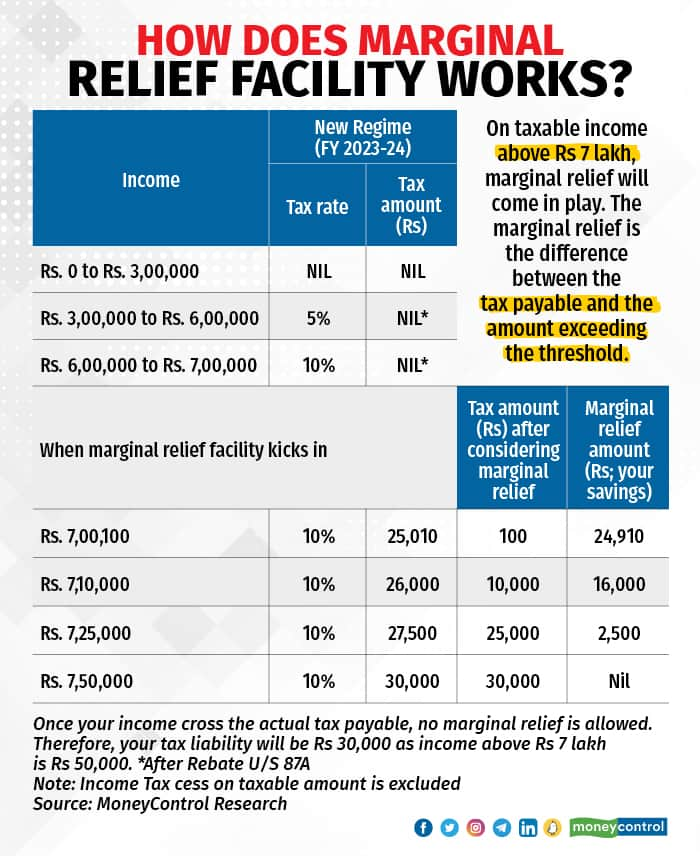
On March 24, the Lok Sabha passed the Finance Bill 2023 with several amendments, including extension of marginal relief for those whose income will be slightly above Rs 7 lakh from the next financial year.
Let's delve into what marginal relief is and why it's necessary.
Also read | Budget 2023: Is the Rs 7-lakh tax-free income limit only for the new tax regime?
The backdrop
In Budget 2023, it was proposed that the maximum rebate available under Section 87A of the Income Tax Act, 1961, be increased to Rs 25,000 from Rs 12,500. This rebate can be claimed only if the taxpayer chooses to file returns under the new tax regime. With the increase in the rebate, an individual won’t have to pay any tax if the taxable income does not exceed Rs 7 lakh from FY24.
The rebate under Section 87A is available only to resident individuals and not to non-resident Indians (NRIs), Hindu Undivided Families (HUF), and firms. The rebate is distinct from the basic exemption limit, which was also raised to Rs 3 lakh from Rs 2.5 lakh.
Hence, if an individual's income exceeds Rs 3 lakh in a financial year, it becomes taxable. However, if the income is up to Rs 7 lakh, the taxpayer can claim the rebate and not pay any income tax under the new tax regime.
Also read | Budget 2023 | Old vs new tax regimes: Who should make the switch?
However, the moment the taxable income exceeds Rs 7 lakh, even by Re 1, the entire amount above the basic exemption limit of Rs 3 lakh becomes taxable. In other words, income up to Rs 7 lakh will not attract tax, but if the income is Rs 7,00,001, tax has to be paid on Rs 4,00,001 at the applicable rate. As a result, tax liability increases significantly with just a Re 1 addition in income.
To address this problem, the finance minister proposed an amendment to offer marginal relief. It was explained that if a taxpayer's income is up to Rs 7 lakh, the tax liability would be nil. However, if income is Rs 7,00,100, the tax payable would be Rs 25,010. The additional income of Rs 100 leads to a tax of Rs 25,010.
Hence, the proposal for marginal relief has been introduced.
Also read | The ultimate guide that helps you choose between new and old income-tax regime
What is marginal relief?
The marginal relief is the difference between the excess tax payable and the amount exceeding the threshold. This implies that the tax liability cannot be more than the income that exceeds Rs 7 lakh. Put simply, marginal relief offered is equal to the amount by which the Rs 7 lakh threshold is exceeded.Refer to the table for better comprehension.

The concept of marginal relief has existed since the implementation of surcharge. Income tax surcharge is an extra charge levied on the taxable amount paid when income exceeds a certain threshold.
The surcharge rate differs based on the income level. If income ranges from Rs 50 lakh to Rs 1 crore, a surcharge of 10 percent is levied. For income from Rs 1 crore to Rs 2 crore, from Rs 2 crore to Rs 5 crore and above Rs 5 crore, the surcharge rates are 15 percent, 25 percent, and 37 percent, respectively.
Also read | How to use IT department’s official tax calculator to choose between old and new tax regimes
However, in the Finance Bill 2023, the surcharge for income above Rs 5 crore has been reduced to 25 percent from 37 percent.
Marginal relief can be claimed after every slab of surcharge in accordance with the provisions of the Income Tax Act.